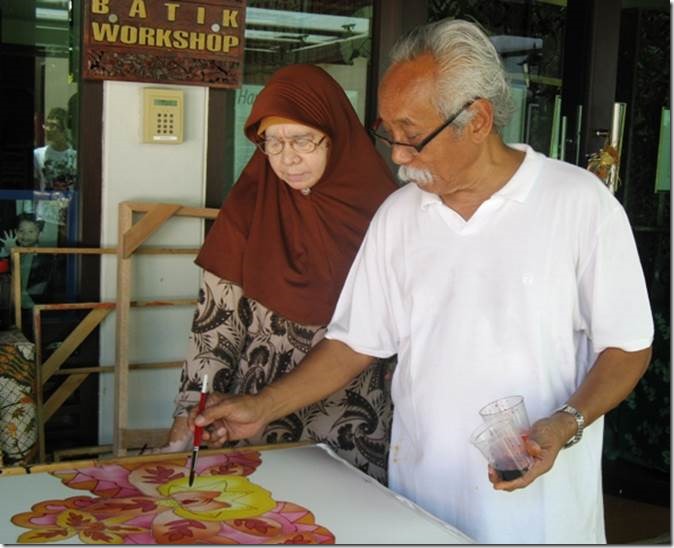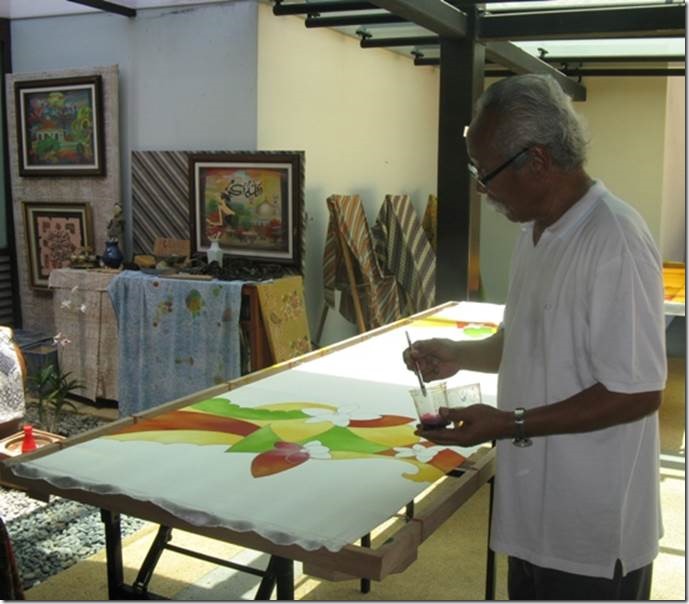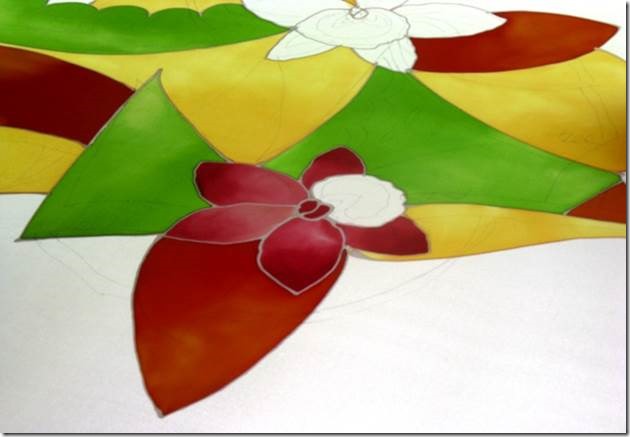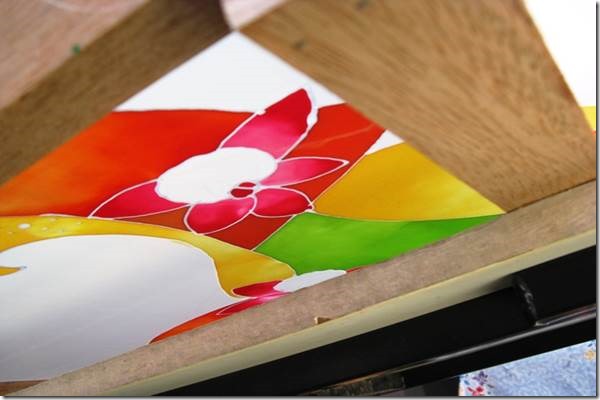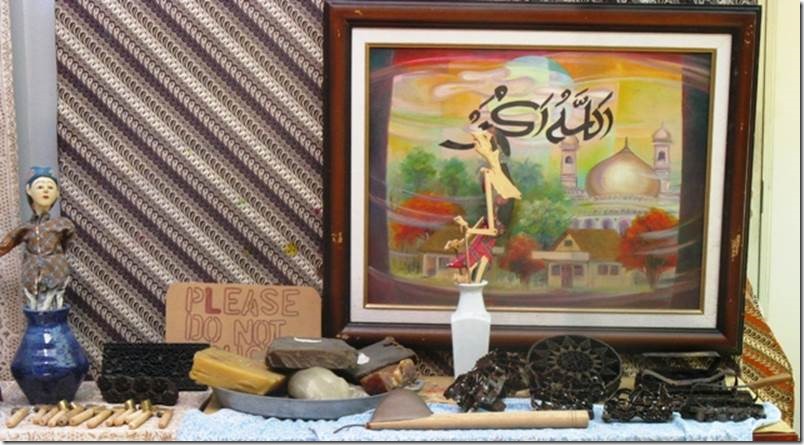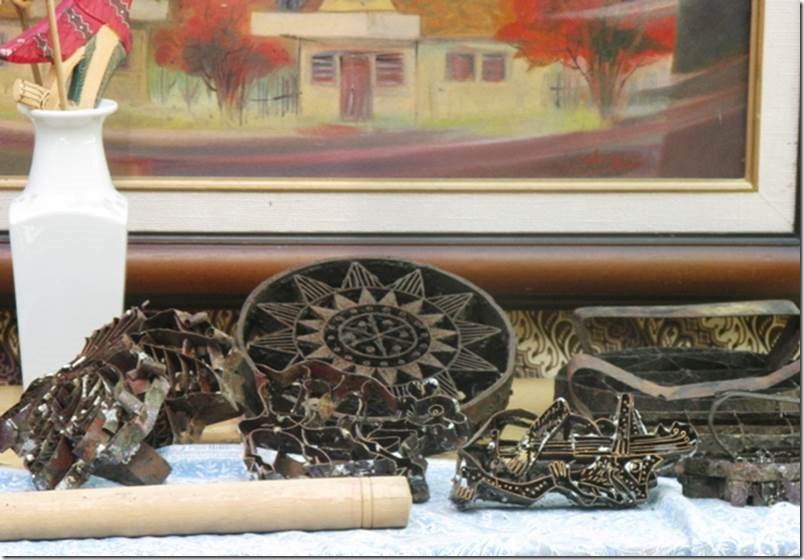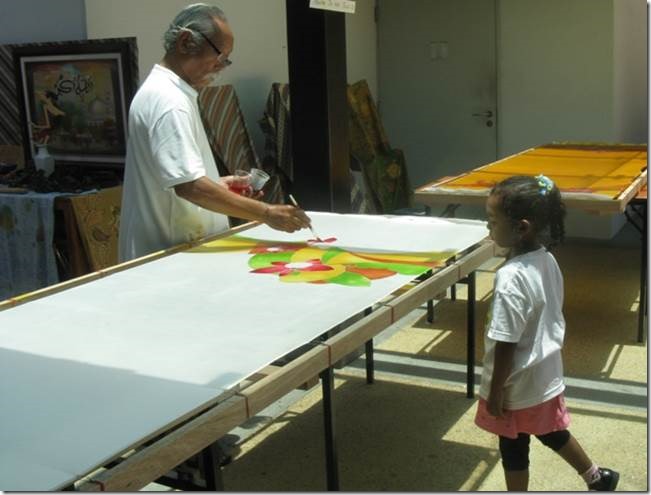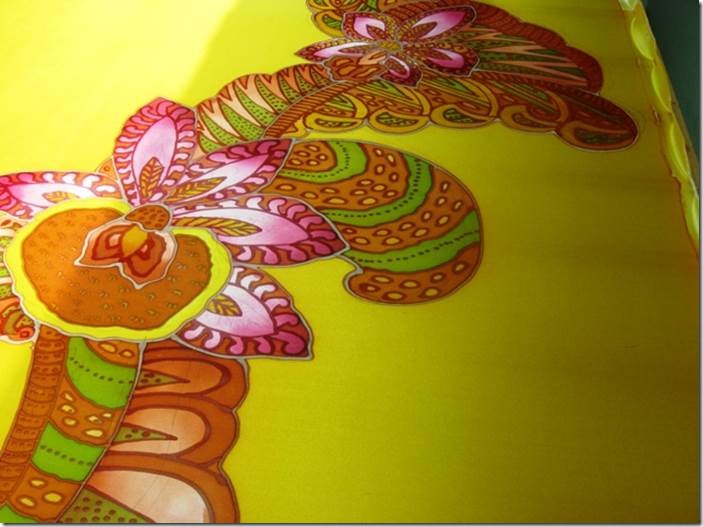While I was at the Malay Heritage Centre I was lucky to catch a batik demonstration or part of a workshop; I’m not sure which.
From the Malay Heritage Centre website
Batik
Of Javanese origins, this technique has found its popularity in Singapore , especially at the Malay Heritage Centre. The term comes from an old Javanese word which means “ to dot ”. Since the 12 th century, this basic concept of using wax and dye has been really popular with Singaporean locals, as well as foreign visitors.
Canting
The use of Canting and wax creates a resist method on the fabric, when it is drawn free-hand on cotton or silk. These smooth lines prevent the dye from penetrating the other areas of the piece. Some other techniques used are:
Cracking Method
This method involves the brushing of wax onto a piece of cloth/silk. When it is dry, it is then crushed and soaked in dye, hence allowing dye to penetrate into the cracked lines. In olden days, only darker coloured dyes are used at this stage. After drying, a second layer of cracking wax is applied to the coloured piece and then painted once more. This effect allows for greater exploration of colours and design.
Absorption Method
This method involves the use of materials like tissues, rock, salt, etc. For example, when tissues are used, it will be spread unevenly on the Batik piece and water is then added to the different parts of the piece. Next, when dye is added or dotted, it will seep into the wrinkles of the tissue, creating a jagged effect. This effect allows for greater exploration of colours, design and imagination.
The Malay Heritage Centre offers workshops in Batik and Pottery. I don’t know if this woman was a student at a workshop or an assistant since she was the only one other than the teacher doing the batik. I asked her a question, but was told by the teacher that the woman spoke little English. The teacher reminded me of the actor Pat Morita from the Karate Kid. When I said I was from the US, he asked if I were from Key West. I think I’ll take that as a compliment. He walked over to help her before I could ask, “why Key West?”
Teacher shows student. I should have asked more questions but I didn’t want to interrupt. I found the information below on the web and I’m guessing it explains the process the were doing.
‘False batik’ or ‘faux batik’ is a term that silk painters use for getting the traditional look of batik. You can paint layers of dyes starting with the lightest progressing through to the darkest colour and painting over the complete piece of silk after each waxing instead of dipping in the dye. Then you can crumple up the batik and paint over the last dye which will seep into the cracks and form the crackle effect one sometimes associates with batik. Unfortunately it is a term that batik artists do not refer to. A lot of them do batik in this way but do not call it faux batik. There are many ways of applying the wax and the dyes. But in this method you do not dip the fabric in dye like in traditional batik. http://www.batikguild.org.uk/questions.asp
The top of the batik. The flowers are outlined in wax and the paint just flows over it.
The back side of the cloth. I was told that real batik looks almost the same on both sides of the cloth to indicate the design was dyed into it and not printed on one side.
Paintings, shadow puppets and batik stamping tools
Instead of applying the wax with a small hand held tool, the molds are dipped into wax and pressed onto the cloth where the design has already been marked. I saw a video of batik design at the Asian Civilization Museum.
Inspiring the next generation.
I would have loved to have seen this created start to finish. But partly I was in a rush to see and get back to the boat to start packing up for our trip to Sebana Cove tomorrow. Wish I hadn’t waited to the last day to visit the Centre. You might have noticed that I use the British spelling for words: centre, theatre, etc. That was if you search for anything I’ve written about you’ll find it more easily. And besides, “when in Rome..”

